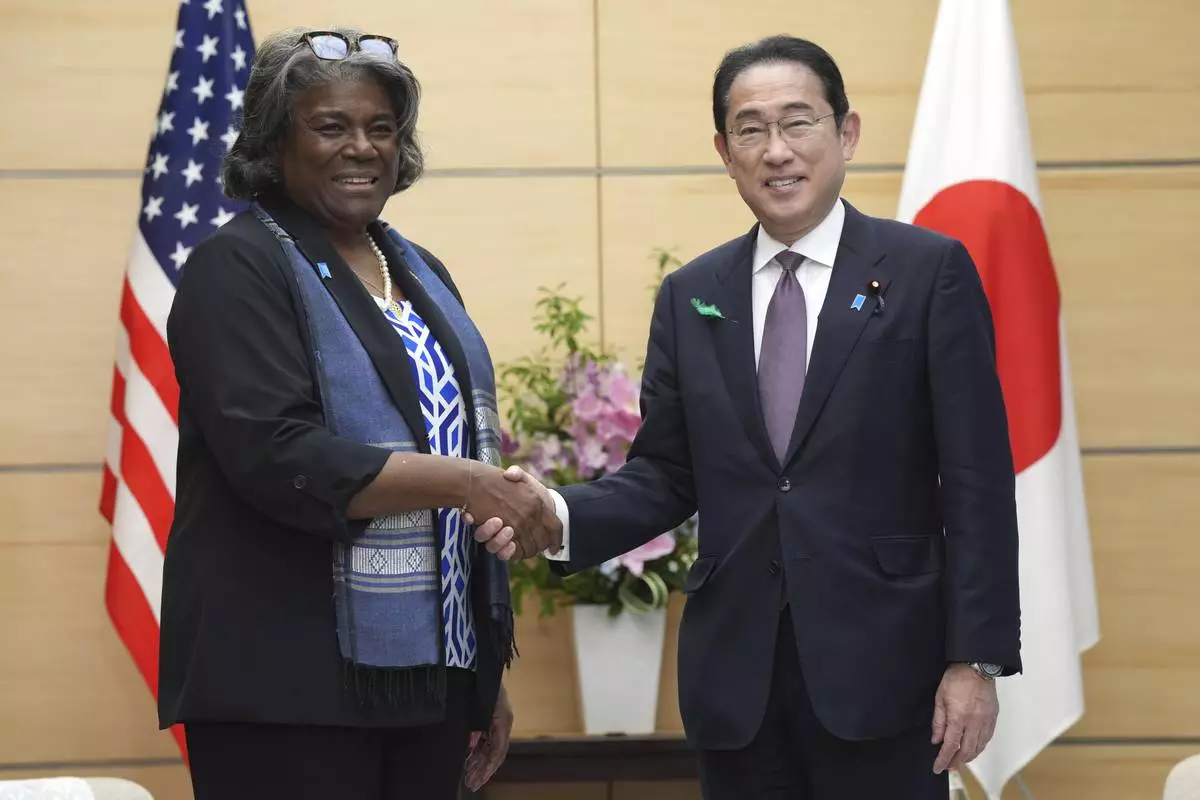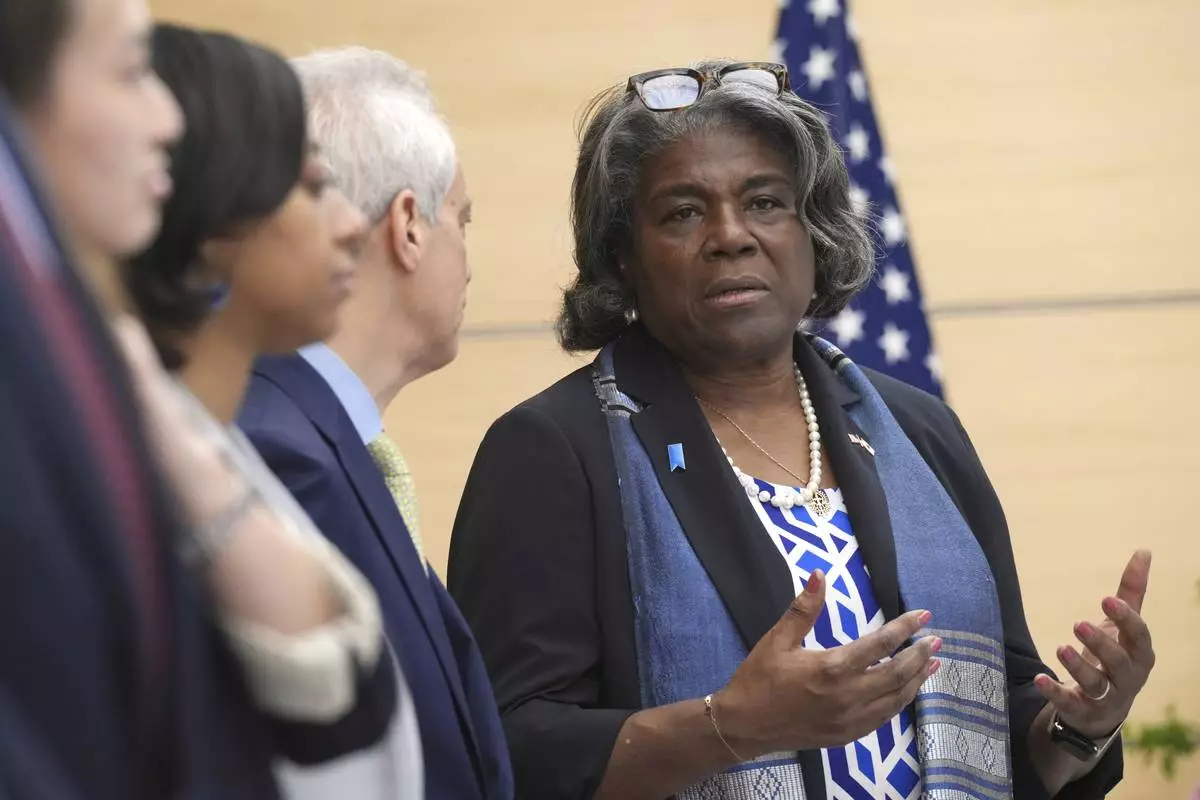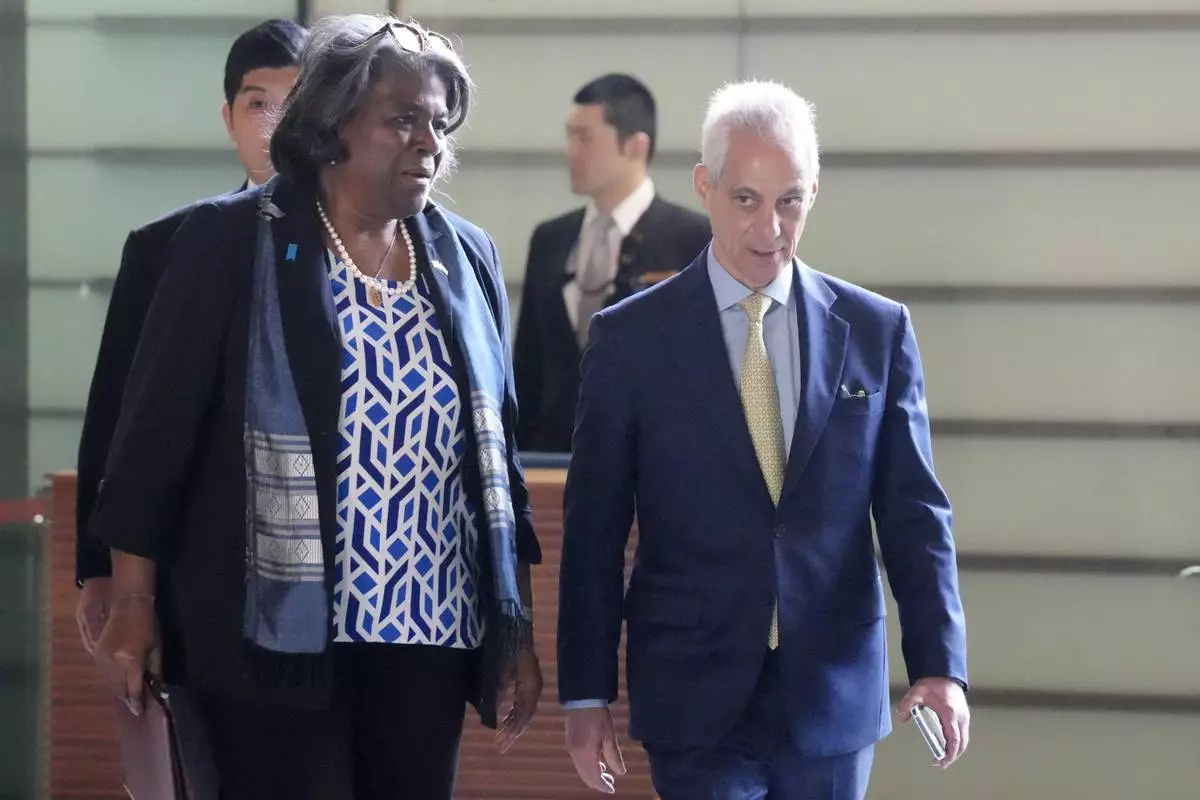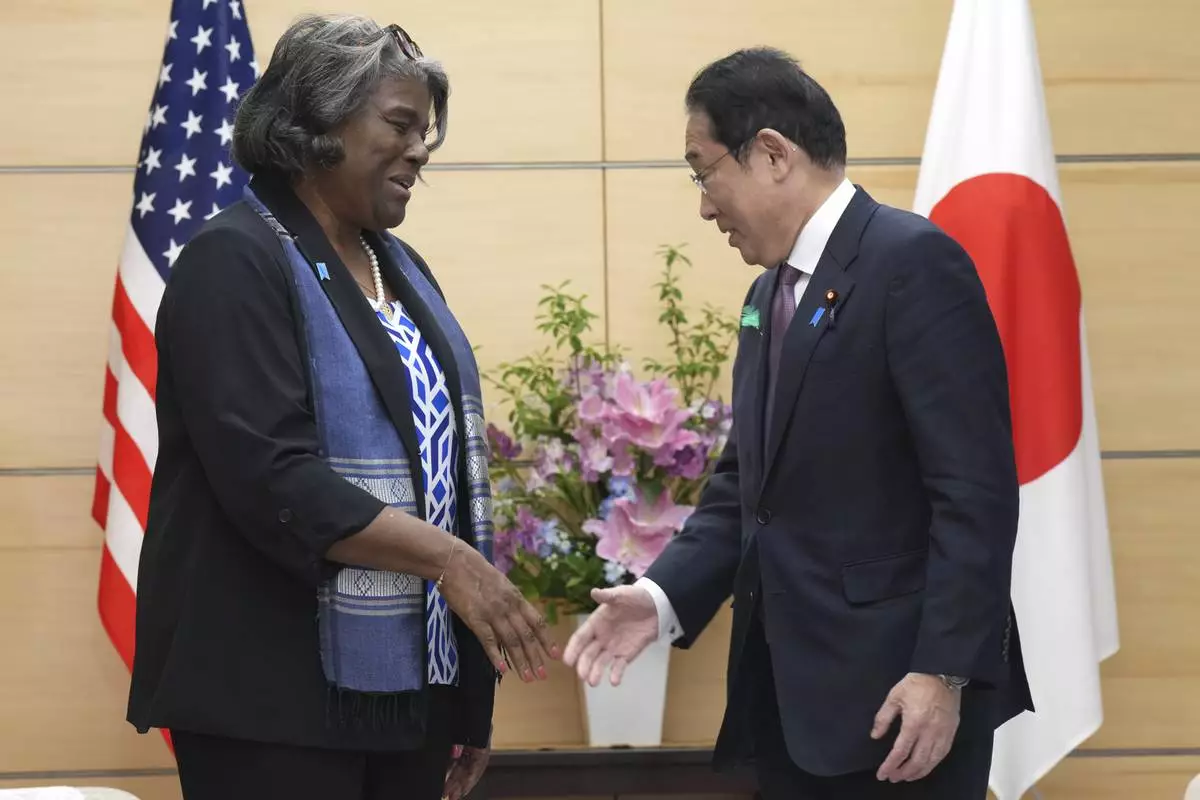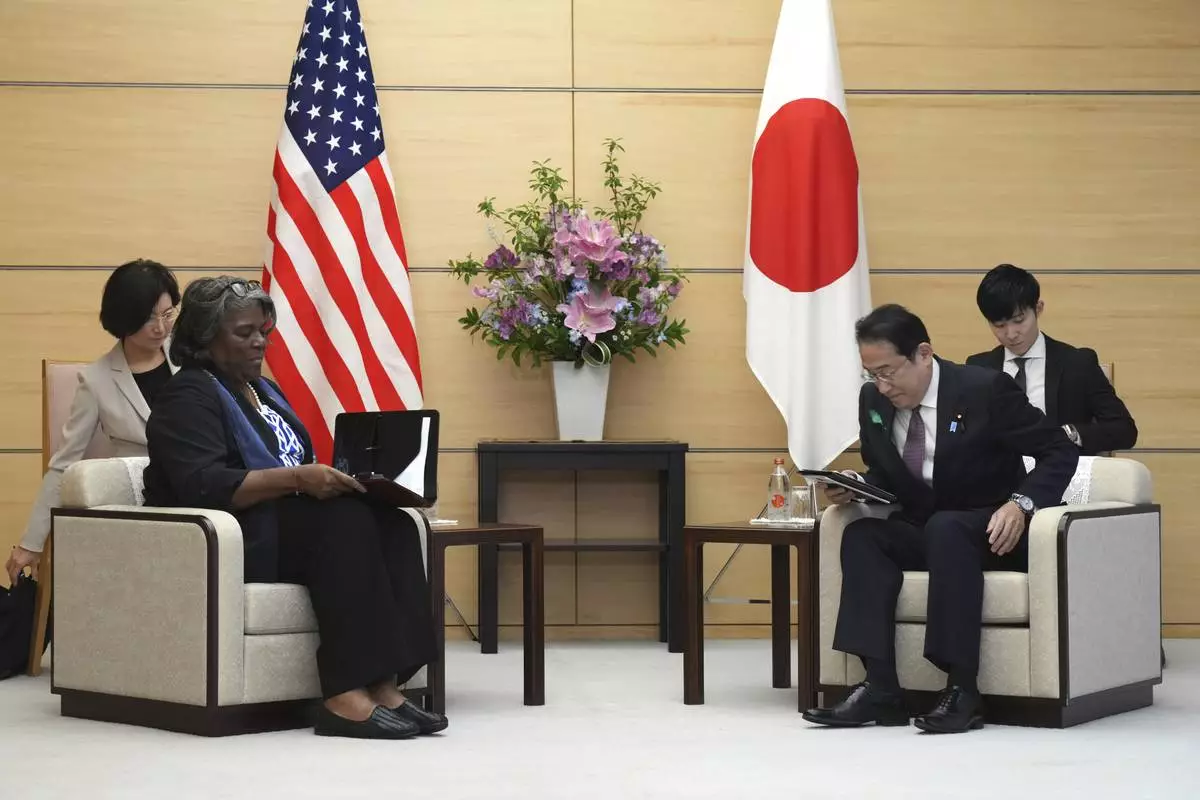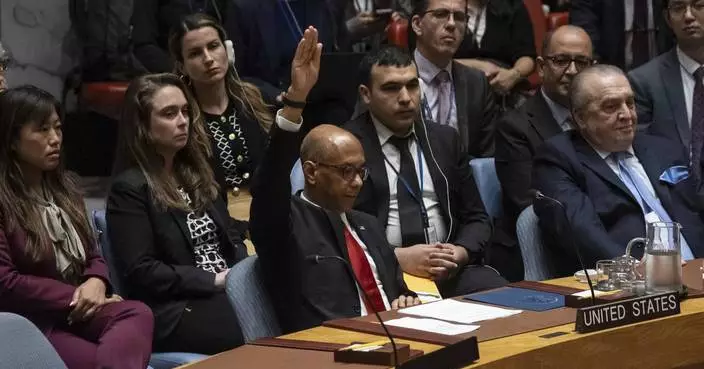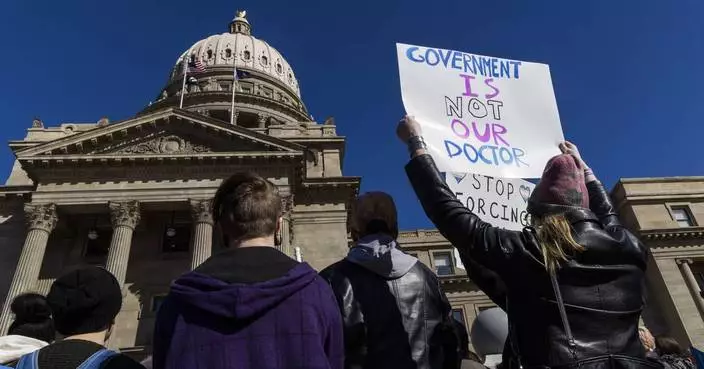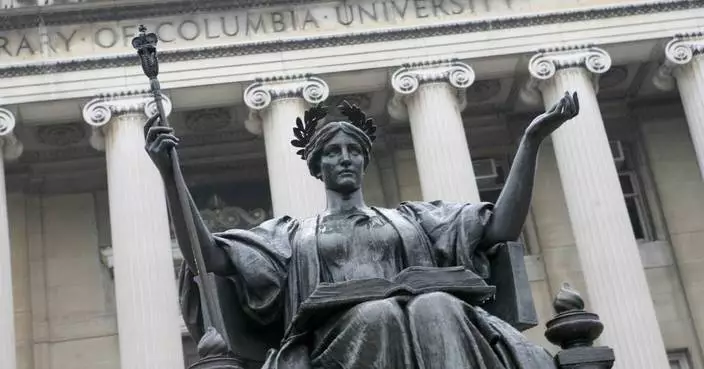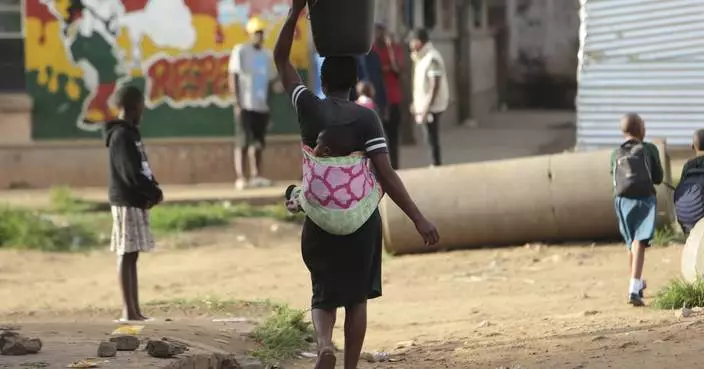The U.N. climate chief says world leaders must recognize there is no option except to speed-up and scale-up action to tackle global warming, warning that continuing on the current path will lead to "a catastrophe.
Patricia Espinosa stressed in two recent interviews with the Associated Press that climate scientists are saying there's still a chance to make things right "but the window of opportunity is closing very soon" and the world has 12 years until carbon emissions reach "a point of no return."
That means the world needs to accelerate all efforts to keep from reaching that level, "and therefore all efforts are absolutely indispensable" to cut carbon emissions and keep temperatures from rising, she said.
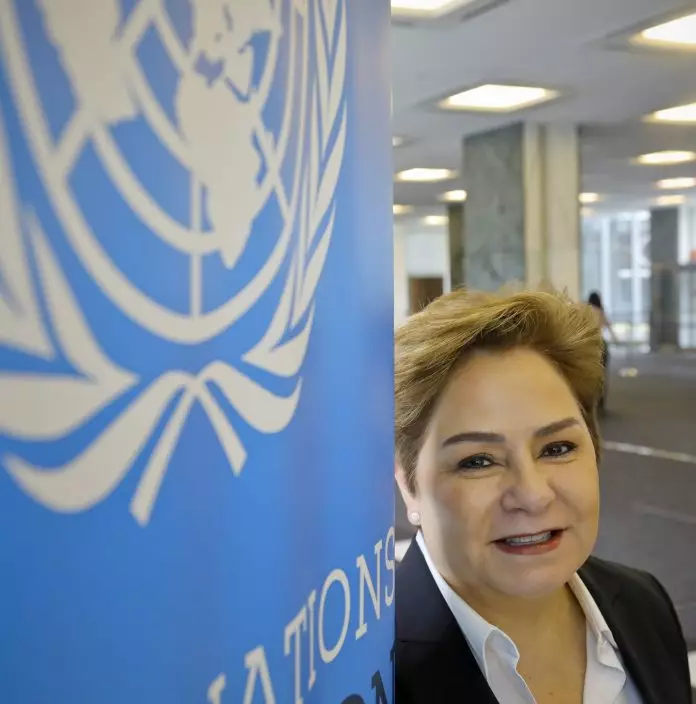
In this March 29, 2019, photo, Patricia Espinosa, Executive Secretary of the United Nations Framework Convention on Climate Change (UNFCCC), at U.N. headquarters. The U.N. climate chief says world leaders must recognize there is no option except to speed-up and scale-up action to tackle global warming, warning that continuing on the current path will lead to "a catastrophe." (AP PhotoBebeto Matthews)
Some top scientists say reaching the "tipping point" in 12 years is an oversimplification of a U.N. report last year.
Espinosa said carbon emissions were expected to rise in the immediate future after the landmark Paris agreement was adopted in 2015 to address climate change because the transformations needed to go to a downward trajectory "cannot be done overnight." In addition, global population is growing and more people demand more energy and resources, she said.
"What has become clear, however, is that if we continue to grow or to behave in a way that this kind of trajectory is maintained we will not be able to achieve the goals of the Paris agreement," said Espinosa, who is executive secretary of the United Nations Framework Convention on Climate Change.
The Paris agreement called for global temperatures to rise a maximum of 2 degrees Celsius (3.6 degrees Fahrenheit) by the end of the century compared to pre-industrial times and as close as possible to 1.5 degrees Celsius (2.7 degrees Fahrenheit). The world has already warmed 1 degree Celsius, so the goal is really about preventing another 1 or 0.5 degrees Celsius (1.8 or 0.9 degrees Fahrenheit) increase from now.
A report last year by the Intergovernmental Panel on Climate Change, or IPCC, concluded that while it's technically possible to cap global warming at 1.5 degrees Celsius (2.7 degrees Fahrenheit) by the end of the century, it is highly unlikely because this would require a dramatic overhaul of the global economy, including a shift away from fossil fuels. Deep in the report, scientists say less than 2 percent of 529 of their calculated possible future scenarios kept warming below the 1.5 degree C (2.7 degrees F) goal.
"What science is showing now since Paris is that 1.5 degrees C is really necessary because the consequences of staying at 2 degrees C are very big," Espinosa said. "And secondly, it is also showing that 1.5 degrees C is possible. It takes more effort. It takes much more political will."
She said the IPCC scientists gave the world 12 years "to speed-up and scale-up the actions" to cut emissions before they start spiraling out of control.
"It doesn't mean that we need to wait 12 years and then look at it as the moment to do this," Espinosa said. "It means that we need to accelerate the tipping point, and therefore all efforts are absolutely indispensable."
The U.N. report does not say 2030, the date used, is a last chance, hard deadline for action, as it has been interpreted in some quarters.
The panel "did not say we have 12 years left to save the world," James Skea, co-chairman of the report and professor of sustainable energy at Imperial College London, told The Associated Press. "The hotter it gets, the worse it gets, but there is no cliff edge."
"This has been a persistent source of confusion," agreed Kristie L. Ebi, director of the Center for Health and the Global Environment at the University of Washington in Seattle. "The report never said we only have 12 years left."
Espinosa said in an interview Tuesday that the attention the issue is getting "is clearly growing" but not "at the speed and the breadth that it should."
Governments get trapped in dealing with immediate needs "and we are not yet in a situation where we can say we have a broad understanding that the threat to climate change is part of those immediate needs," Espinosa said.
She said communities that suffer destruction from the effects of climate change have woken up, the movement by children from schools around the world is "a wake-up call," and mass protests to combat climate change will hopefully spur decision-makers.
But Espinosa said some people say climate change isn't happening, "this is not man-made," and "others are just very, very indifferent to the issue."
"So we have a lot of work to do to still to get everybody on board," she said. "We have a very long, long way to go."
Espinosa stressed that the goal is "to get to a moment where leaders recognize that there is no option."
"The truth is that if we continue to produce, consume, to function as we are doing now, we know that we are going toward a catastrophe," she said, and that will mean loss of lives, serious impacts on different sectors of the economy, massive displacement and instability.
Leaders must understand "that the business as usual scenario is not an option anymore," she said.
To those who question how the goal of 1.5 degrees C can be achieved, Espinosa asked: "How can we ignore a goal that is absolutely necessary to avoid really catastrophic consequences?"
U.S. President Donald Trump announced in 2017 that the U.S. will pull out of the Paris climate accord unless he can get a better deal — a possibility that others such as the European Union and China have dismissed.
"We want to engage with the U.S. government and listen to their concerns and see how we can maybe address them together," Espinosa said. "I'm still hopeful that there could be reconsideration of this decision."
She noted that many places in the United States are being severely affected by climate change "so I believe this can also bring political leaders in the U.S. to try to exercise their influence in hopefully looking at this issue one more time."
Even without support from the Trump administration, Espinosa said, there is a lot of U.S. leadership on climate change from the business sector, regions, governors, mayors and ordinary Americans which "we see with great optimism."
AP Science Writer Seth Borenstein contributed to this report from Washington



